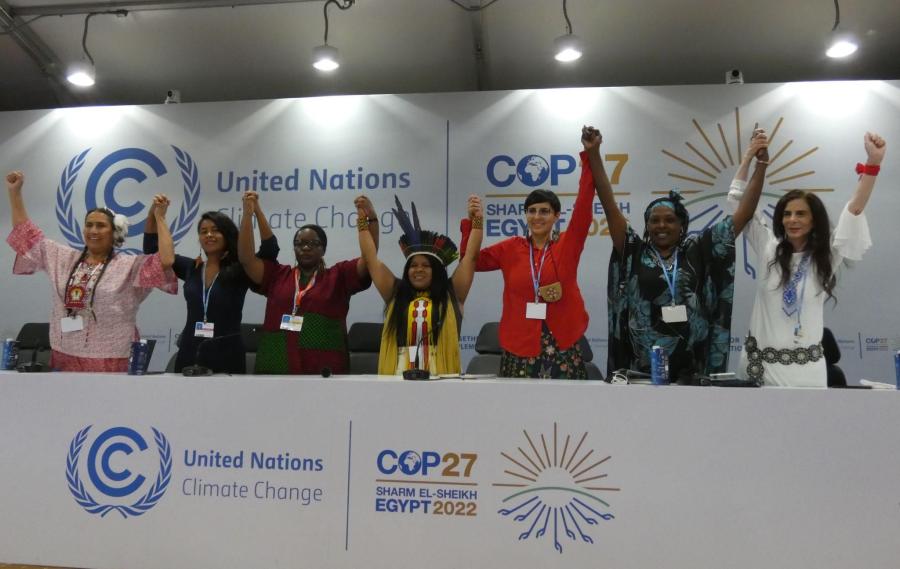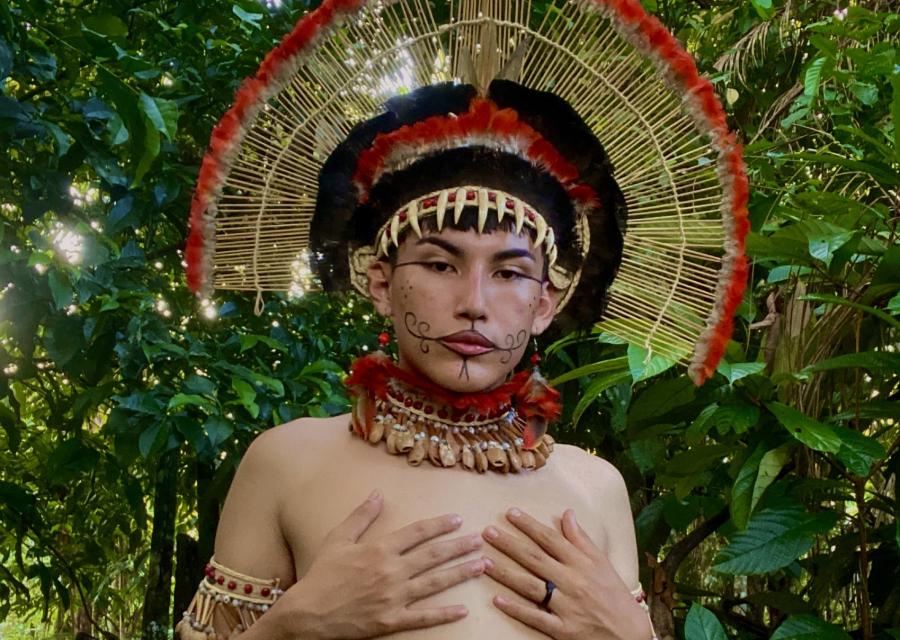To be human is to make music, and the music we make says a great deal about who we are or, at least, who we think we are. That is why music is not just humanity's way of banishing the eternal and terrifying silence of the universe. It is also the way in which each piece of humanity lays claim to its own particular character. Music is thus profoundly ambiguous. It unites all of humankind, for there are no peoples who do not make music, yet it also separates people, for it so often becomes an important way of defining the identity of groups and distinguishing them from others.
This issue of the Cultural Survival Quarterly explores this ambiguity. It takes music as its theme because it is such an important aspect of what makes us human, but also because it is often such a crucial aspect of what makes us different from each other. The Suyá Indians of Central Brazil are emphatic about the central role of their music in their culture. It is their singing that makes them who they are and that establishes for them their place in the scheme of things. This cosmological dimension of a people's music tends nowadays to be found only in the most homogenous societies, usually those which are small and which have been marginal to the great modernizing trends that have swept across the globe in recent centuries. It is true that the connection between music and the sacred, indeed of singing and dancing with the performance of sacred ceremonial, is as old as humankind. Music continues to have important religious functions all over the world and may help worshippers to define their place in the cosmos, but those worshippers rarely belong to societies in which only one view of the individual's place in the scheme of things is generally accepted. Identities nowadays are contested or have to coexist with other identities.
This is brought out very clearly in the case of the Croatians who insisted on - in fact, positively gloried in - going to the nation's capital of Zagreb and performing in the International Folklore Festival at a time when their own villages were under attack from the Serbs. They performed the most traditional of all Croatian song and dance routines, the kolo, to show that their Croatian culture was vibrant and unbowed. But the kolo that they had written especially for the festival emphasized that the singers and dancers were Slavonian, in the thick of the fighting, and not at a safe distance from it, like the citizens of Zagreb.
The Salvonian use of music to emphasize cultural identity is very common. What is highly unusual is the use of songs by Australian Aborigenes to establish legal title to their lands. It has been an ongoing scandal of the colonial and postcolonial regimes in Australia that the British, when they seized the continent and turned it into a colony, declared it terra nullius. By so defining it as no man's land, they negated all claims to land by the aboriginal inhabitants of Australia. Until recently Aborigenes have had little legal recourse, but since the 1970s the Australian government has been moving to at least make it possible for aborigenes to claim land rights. Aborigenes traditionally memorized their land rights through their songs and the song lines that enabled them to construct mental maps of the terrain. The admission of these songs as legal evidence in the courts marks a new departure in the use of music to establish a people's rights as well as its identity.
But what if a people's musical identity is being undermined rather than overpowered? All over the world "traditional" music is threatened by the power and diffusion of the pop music industry. To the extent that this industry succeeds in weaning young people away from the traditional music of their elders it threatens the very cultural identity which had previously sustained them. Of course cultural survival is only possible where the bearers of a culture are interested in maintaining it and where they have the means to do so - in other words, where they are neither undermined nor overpowered. The articles in this issue show that traditions, in music as in other matters, survive best where they are lived and living. West African drummers may not play as they used to, but their drumming is still very much part of West African life, in spite of the spread of Afropop. In fact, both the drummers and the Afropop music contribute to the fellow feeling and cultural pride of West Africans in their American diaspora.
For me, the most heartening story in this issue is that of Avihu Medina, the Israeli musician. He speaks with understandable resentment about the way in which he feels that he and other Mizrahi musicians, drawing their inspiration from musical traditions in the Near Eastern countries from which they came, have been marginalized by the Israeli radio and musical establishment. He is quite clear about the contested identity of Israelis themselves and the powerful Ashkenazi influence that insists that Israel should have a European cast, as opposed to the orientalism of the Mizrahi. Yet, in spite of everything, Avihu Medina is successful and Mizrahi music is flourishing. If cultural survival is the peaceful interplay between distinct identities, then his is perhaps a cultural survival success story.
Article copyright Cultural Survival, Inc.



